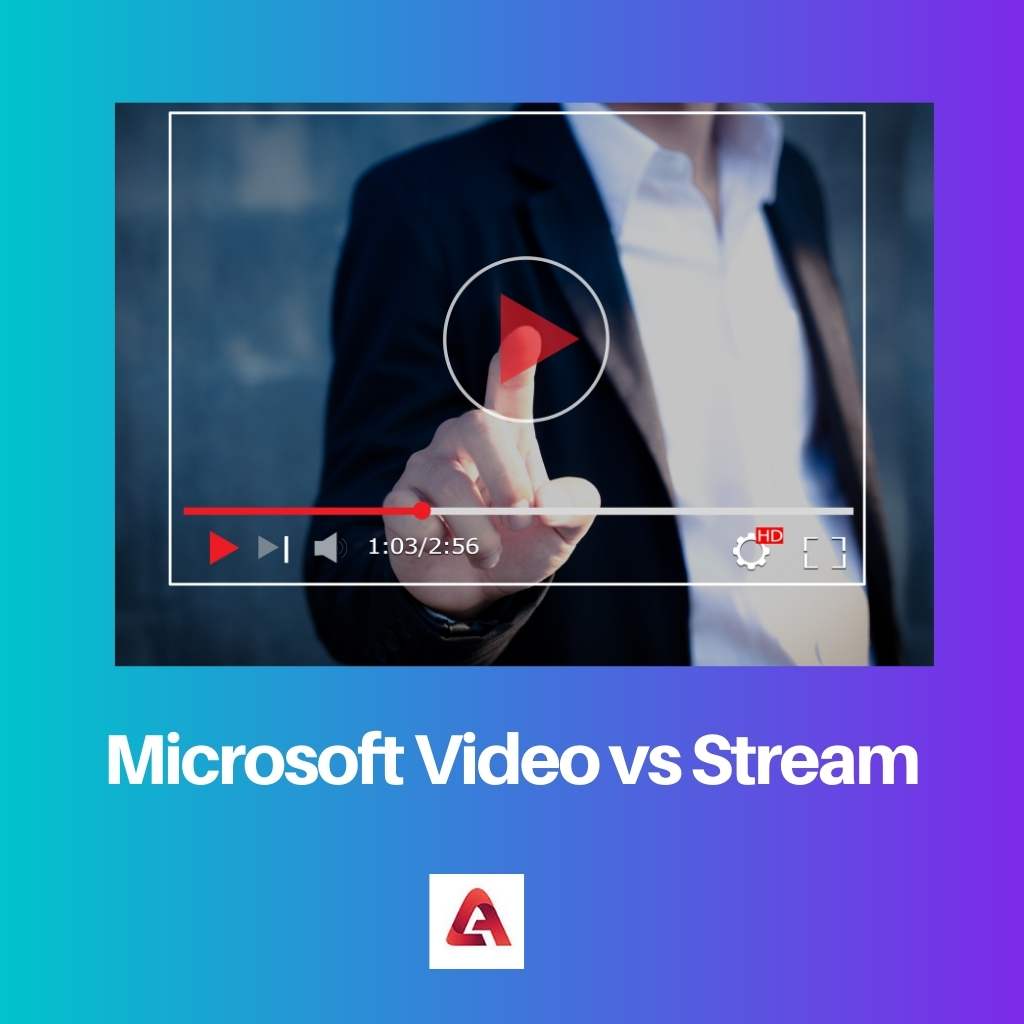People commonly have more inclination towards visual upgrades as opposed to words and numbers. This remains constant in both instructions and recreation.
A reliable and extensively embraced type of instruction presently is to utilize general media modalities for professional preparation.
The requirement for an individual video gateway for associations is a need of great importance, with a few stages existing as of now.
Key Takeaways
- Microsoft Video is a video editing software, while Stream is a video hosting platform.
- Microsoft Video allows users to create and edit videos, while Stream stores and shares videos.
- Microsoft Video is a part of the Microsoft Office suite, while Stream is a standalone service.
Microsoft Video vs Stream
Microsoft Video is a media entrance that is based on Azure Media Services and is used to share, transfer and manage recordings on multiple devices, including smartphones. Microsoft Stream is a video-sharing service that replaced Office 365 Video and is fully integrated into Office 365.

Microsoft Video is an entrance for sharing, transferring, and overseeing recordings on different gadgets, including cell phones.
Microsoft Video is quite possibly the most incredibly complete substance-sharing capability we have embraced in the undertaking.
Improved on altering capacity and sharing cloud preparing recordings with One Drive helped us all the more successfully lead cross-group exercises.
Microsoft Stream is an Enterprise Video administration where individuals in an association can transfer, view, and offer recordings safely.
One can share accounts of classes, gatherings, introductions, instructional meetings, or different recordings that help your group’s coordinated effort.
Microsoft Stream likewise makes it simple to share remarks on a video, tag timecodes in remarks, and portrayals to allude to explicit focuses in a video and examine with associates.
Comparison Table
| Parameters of Comparison | Microsoft Video | Stream |
|---|---|---|
| Comments | Microsoft Video uses yammer for video comments. The user does not have to look to yammer to see if any conversations exist. | Stream uses its own built-in Comments interface. |
| Search | You can look through the two recordings and channels. | You can’t look for channels straightforwardly yet can look through recordings inside the channels utilizing the amplifying glass in the upper left part of the gateway. |
| Transferring Videos | Anybody in the association who controls who joins can transfer recordings | IT administrators can handle who can make channels and transfer recordings to them. |
| Channel Creation | Open to anybody with an organization email id to make their channel/s, transfer, and offer recordings. | Inhabitant level control for channel creation. |
What is Microsoft Video ?
Microsoft Video Portal is a next-gen varying media entrance that is upheld by the dynamism of the Azure Media Services stage through which we can acquire all-encompassing help for corporate intranet needs and information on the executive’s necessities.
Likewise, it fills in as a between-group coordinated effort instrument, adequately proficient at working with individuals and gatherings in putting themselves out there viably.
Microsoft Video is extraordinary for reviewing and sharing recordings at the foundation. It is an extremely powerful gateway to post and watch recordings, where we record classes, preparations, and gatherings.
Everybody approaches the substance, which works with this trade of information in the organization. It offers extraordinary adaptability.
It is our decision to share correspondence recordings and accounts. We can undoubtedly make recordings telling interior occasions or make the best way to recordings to support staff.
It additionally gives Html portable playback, which makes it versatile. Likewise, it is an adaptable endeavour video arrangement as it’s a sans issue for the administrator to oversee authorizations, reestablish video from the reuse receptacle, and feature significant updates just as add and eliminate channels.
Moreover, this is supported by Office 365 and Azure Media Services, giving you an encoded, industry-driving stage.
What is Stream?
Microsoft Stream is a protected video administration, so one can oversee who sees their video content and decide how broadly to share inside their association.
Secure application access is empowered by Azure Active Directory, a perceived innovator in the character of the board frameworks, to ensure touchy corporate substance.
Microsoft Stream additionally assists us with getting sorted out the content into channels and gatherings so it’s simpler to discover.
Microsoft Stream functions admirably with other Microsoft 365 applications like Teams, SharePoint, OneNote, and Yammer, giving many more approaches to finding more significant substance.
At the point when we transfer a video to Stream, we are given the alternative of giving a name and portrayal to the video. You can likewise determine the video’s language and pick a thumbnail.
A portion of the further developed transferring alternatives remembers setting consents for the video and empowering shut-inscribing.
Stream not just comes packaged with an incredible local video player and better web-based capacities with all gadgets, yet in addition with the element to transfer, watch, and offer recordings in a hurry with cell phones.
The recordings have classes as per likes, current streaming, and what is moving. Microsoft, at present, has driven designs to quickly develop Stream into the go-to media cloud entryway for organizations and companies.
Main Differences Between Microsoft Video and Stream
- Microsoft Video utilizes Yammer for video comments, while Stream utilizes its own implicit Comments interface
- Microsoft Video aggregates and luxuriously shows measurements identified with the occasions that a video has been seen, whereas Stream shows the complete number of perspectives that a video has gotten, however, it doesn’t give a pleasant graphical view that shows when the perspectives happened.
- Microsoft Video does not look like a completed application, whereas Stream simply feels more like a completed application.
- Microsoft Video doesn’t have extra features, whereas Stream has developed and added new elements like video management.
- Microsoft Video does not have a local video player, disconnected playback alternatives, the capacity to install video into SharePoint, and incorporation with Microsoft Teams while the team offers all of these options.



